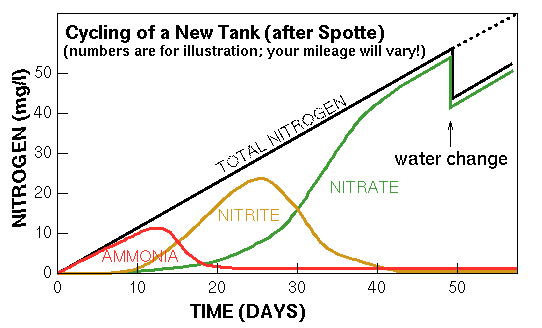Hi all,
* Edit, <"
I apologised"> to
@Miss-Pepper after posting.
honestly this is the first time someone has said to me don't use ammonia to cycle an aquarium
And that is the real issue for me, many forums and LFS are advocating methods that definitely aren't best practice and in a lot of cases actively get in the way of people being successful aquarists. I would hope that you would get better advice in Germany, Sweden or the Netherlands.
There is no money to be made by telling people that
"oxygen, plants and time" are the most important factors in being a successful fish keeper. If you then tell them that
- they can use garden soil capped with sand as substrate,
- that there is no point in trying to change your water chemistry with pH buffers,
- there are no special phosphors, (unique to aquarium tubes), that promote plant growth,
- you can collect rocks, wood and dead leaves safely from the wild,
- that live food, vegetables and dead leaves are cheap and good ways to feed your fish and shrimps
- that a bespoke, very expensive filter media is, at best, irrelevantly slightly more efficient than alfagrog etc.,
- that a canister filter is fundamentally a pump in a bucket.
- that snails are a good thing in the aquarium
- that a lot of aquarium test kits aren't accurate and shouldn't be used as a basis for important decisions.
- Plants need all fourteen of the essential elements for plant growth, just in vastly differing amounts.
- That every ion is the same as every other ion in solution,
- that plants can only take up nutrients as ions and
- it makes no difference to the plant if the source of a potassium ion (K+) was ADA's finest or the cheapest dry potassium salt.
Then a large amount of the products sold by the industry becomes superfluous.
You clearly have a much more scientific background than myself
Some of this is my "day job", but there is a vast resource of peer validated, open source, scientific research available to every-one.
The headline news is:
- Oxygen is much more important than ammonia in "cycling".
- Nitrification* is carried out by a large range of organisms that we've only discovered recently <"Correspondence with Dr Ryan Newton - School of Freshwater Sciences, University of Wisconsin—Milwaukee"> & <"Correspondence with the Neufeld lab. University of Waterloo">,
- and that the bacteria we thought were essential for cycling don't actually occur in aquarium filters
- If you have plenty of plants (and some with the aerial advantage) you can use them both to improve water quality and as an indication of when to add fertilisers.
- "Plant/microbe biofiltration" is much more efficient than "microbe only" biofiltration.
- Plant roots are leaky structures, leaking oxygen, nutrients and carbon into the "rhizosphere", the zone around the root, altering the microbial assemblage to the plants advantage.
Diana Walstad had to publish her book <"
The Ecology of Planted Aquarium"> privately despite the fact that it was meticulously researched and full of information that the subsequent two decades has very largely validated. There were some things that she <"
subsequently revised in the light of her experience">, because she is a scientist she was happy to do this.
Dr Tim Hovanec* sells a product designed to help cycle aquariums, but again was happy to revise his products and advice in light of scientific advances <"
Dr Timothy Hovanec's comments about Bacterial supplements">, but then you go onto to a forum and you read the same old, totally discredited, advice repeated time after time, and it really p*sses me off, because it is one of the things that is standing in the way of people having healthy vibrant aquariums that they can enjoy, rather than staggering from disaster to disaster.
* I've linked these later threads in, because they are relevant to the post.
cheers Darrel





